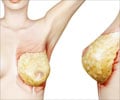
‘Temperatures above 90°F were associated with 28.9 percent increased odds for hospitalization with a surgical site infection (SSI) compared to temperatures less than 40°F.’
Tweet it Now
SSIs can be a major cause of severe illness or death after surgery. SSIs also cause increased use of antibiotics and other antimicrobials. "We show that seasonality of surgical site infections is strongly associated with average monthly temperature. As temperatures rise, risk increases," said Philip M. Polgreen, MD, senior author of the study, Director of the Innovation Lab at The Signal Center for Health Innovation and Associate Professor of Internal Medicine and Epidemiology at the University of Iowa.
"However, the odds of any one person getting an infection are still small, and due to the limitations of our data, we still do not know which particular surgeries or patients are at more risk from higher temperature."
Researchers used data on millions of patients from the Nationwide Inpatient Sample - the largest database of discharges from hospitals in the United States - to identify every adult hospitalization with a diagnosis of SSI from January 1998 to November 2011.
Each hospital's longitude and latitude were used to identify nearby weather stations. Monthly summary statistics from each station were included in the analysis, including temperature, rainfall and wind speed.
Advertisement
SSIs were found to be seasonal, with 26.5 percent more SSI-related hospital discharges in the peak month of August than at the low point of January.
Advertisement
Seasonality and incidence were similar across all regions, age groups, genders and hospital teaching categories, but seasonality was greatest among patients in their 40s and 50s.
"These results tell us that we need to identify the patients, surgeries, and geographic regions where weather-related variables are most likely to increase patients' risk for infections after surgery," said Christopher A. Anthony, MD, the first author of the study and surgery resident physician at University of Iowa Roy J. and Lucille A. Carver College of Medicine.
"This way, we can identify the patients at the greatest risk for surgical site infections during warmer summer months."
Source-Eurekalert









